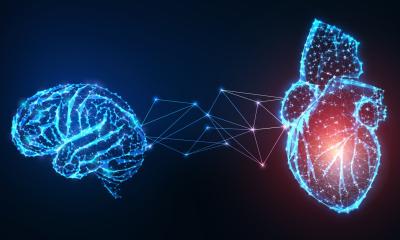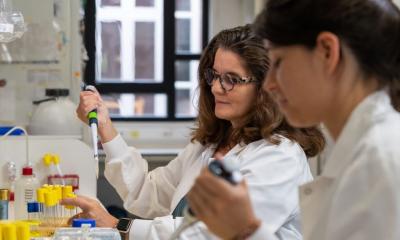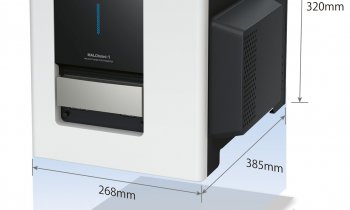The big question
Could dinosaurs hold the key to solving human respiratory problems?

‘In order to understand how something works, you have to look at the extremes, at the limits of the possible,’ says Professor Steven F Perry of the Institute for Zoology at Rheinische Friedrich-Wilhelms-Universität, Bonn, Germany. As far as respiratory biology is concerned, it was dinosaurs that reached those limits. Due to their enormous size and body weight they had to have a very well-developed respiratory apparatus. Prof. Perry, an expert in dinosaur research, has been able to unlock most of the secrets of their respiratory system.
‘The dinosaurs’ problem was the fact that body temperature rises proportionally to body size. This in turn affects the metabolism. In cold-blooded animals, the metabolic rate doubles with each 10 degrees of body temperature. Consequently, dinosaurs must have had an immense metabolic rate. To compensate for this, they had to take up lots of oxygen.’ If we want to understand how this works we can look at birds, which still have a similar respiratory apparatus today. An avian lung can draw twice as much oxygen from the air as a human lung. Moreover, the bird lung has air-sacks that take in body warmth, which can be exhaled later. The respiration of dinosaurs must have happened in a very similar way.’
Such insights are relevant not only for the understanding of prehistoric animals but also for current research, Prof. Perry explained: ‘Smaller animals, such as reptiles, have a wide variety of pulmonary ‘construction plans’ – and they all work. Here, metabolic rates are low and the lungs are large. That means the surface distribution is variable and the results are always successful. At the extreme ends of the scale, the possibilities are reduced, but that’s where we see what’s really important for respiration.’
Most importantly, however, we have to understand the links. How do size, diffusion capacity, gas exchange performance and the function of the pumping apparatus influence one another? These issues should be considered when we look at the respiratory apparatus as a whole. Thus, the scientists detect basic principles which – when looked at from an interdisciplinary point of view – can be relevant for human medicine as well.
In addition to dinosaur research, the interdisciplinary approach is another focus of Professor Perry’s work. Last August, he organised the 1st International Congress of Respiratory Biology (ICRB). ‘I wanted to bring together people who work on the respiratory system of humans, plants, bacteria, fish, insects or dinosaurs in order to exchange results and find common ground. Basic research is very important here,’ he explained.
The congress was a huge success and will be held again in 2009. Then, the organisers hope to attract more participants from human medicine, as there is enormous potential to learn from nature. Case in point: high-frequency respiration, meaning the fact that diffusion conditions (increase of molecular movement), can be improved by vibration. While this question is being researched in insects, it is relevant to paediatricians working with children who suffer respiratory problems. Prof. Perry concludes: ‘This is only the beginning. But who knows? Maybe one day we will be able to implant air-sacks like those of birds and dinosaurs into the respiratory apparatus of people with breathing difficulties.’
14.11.2006










